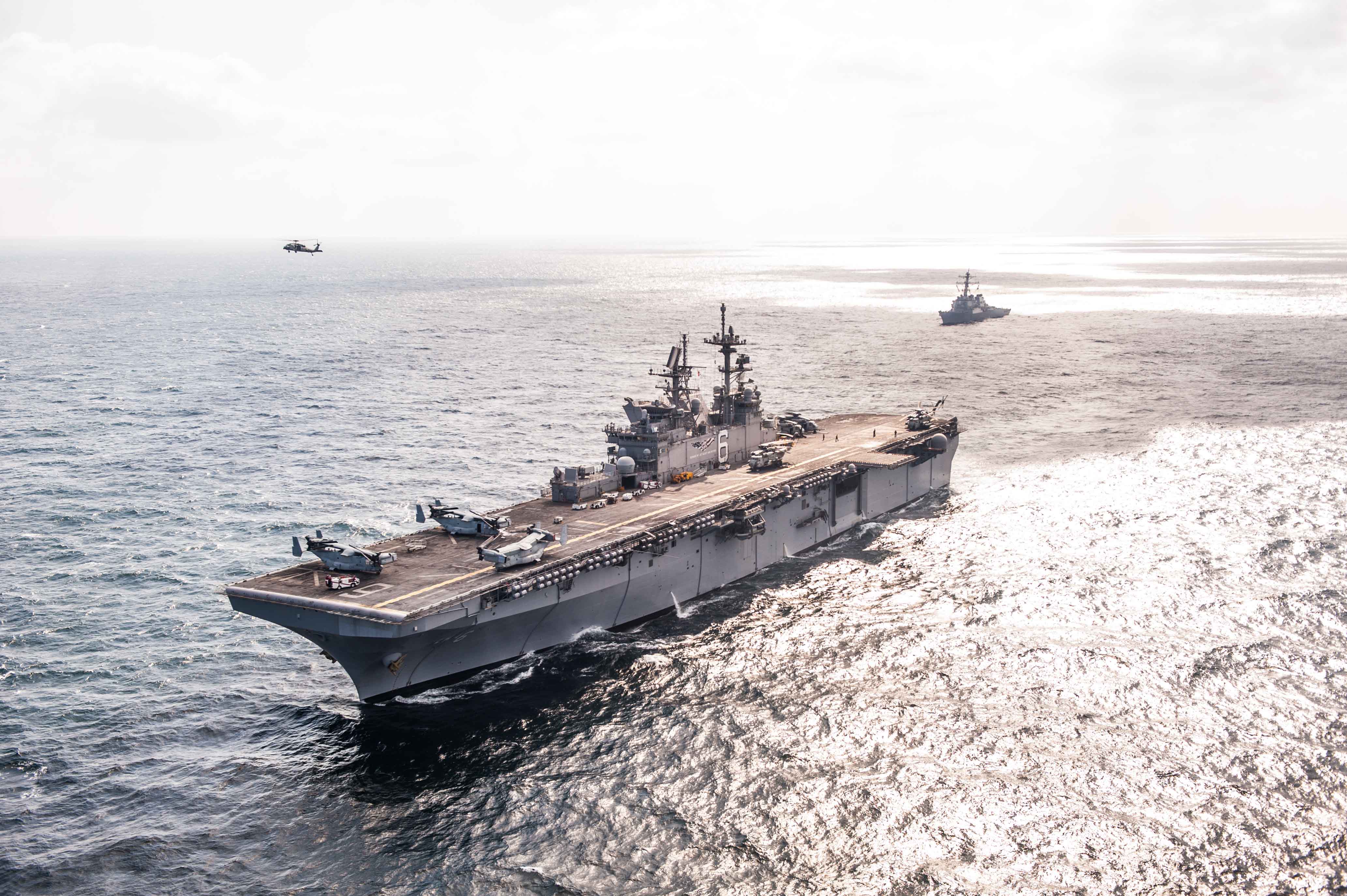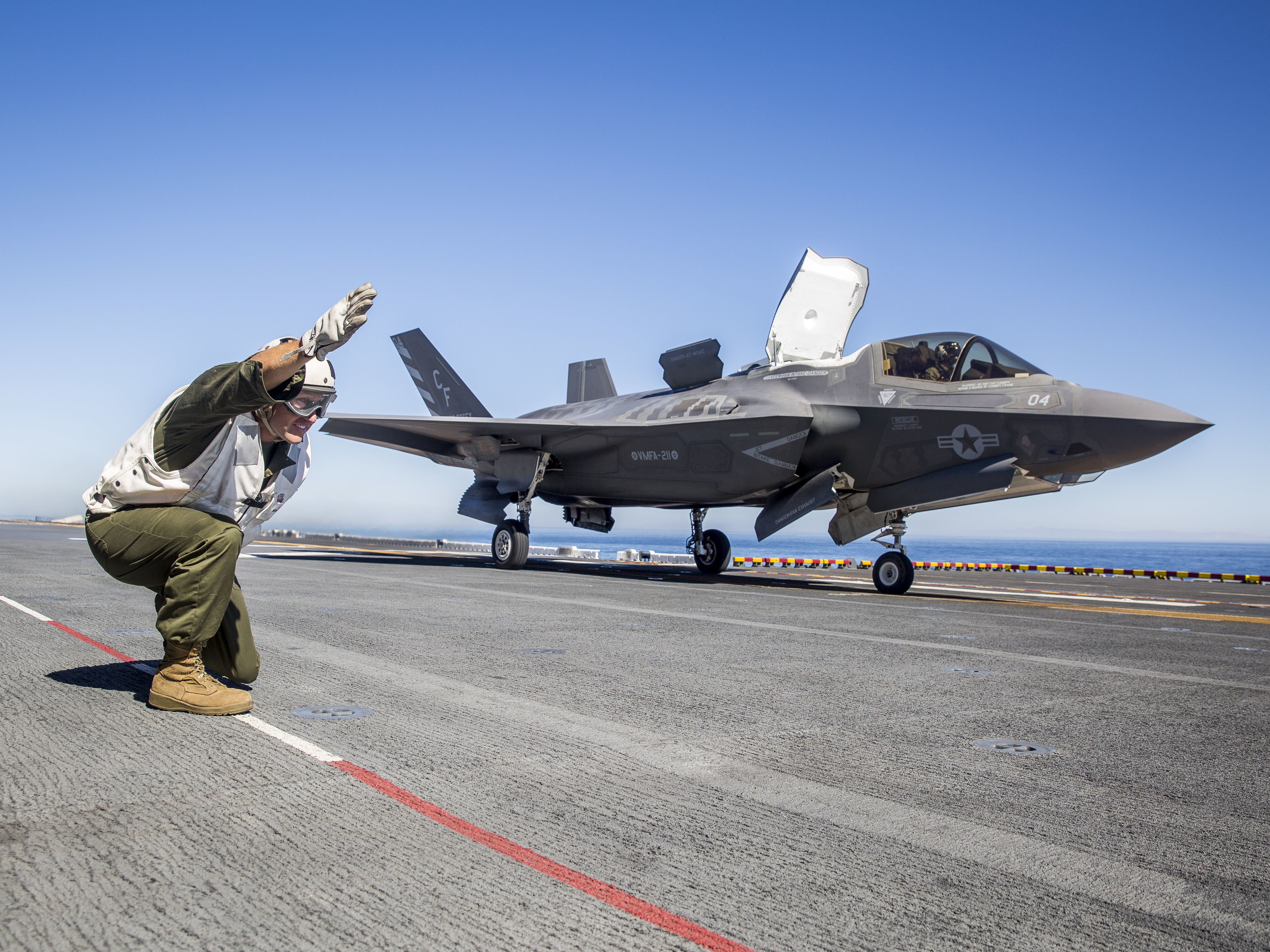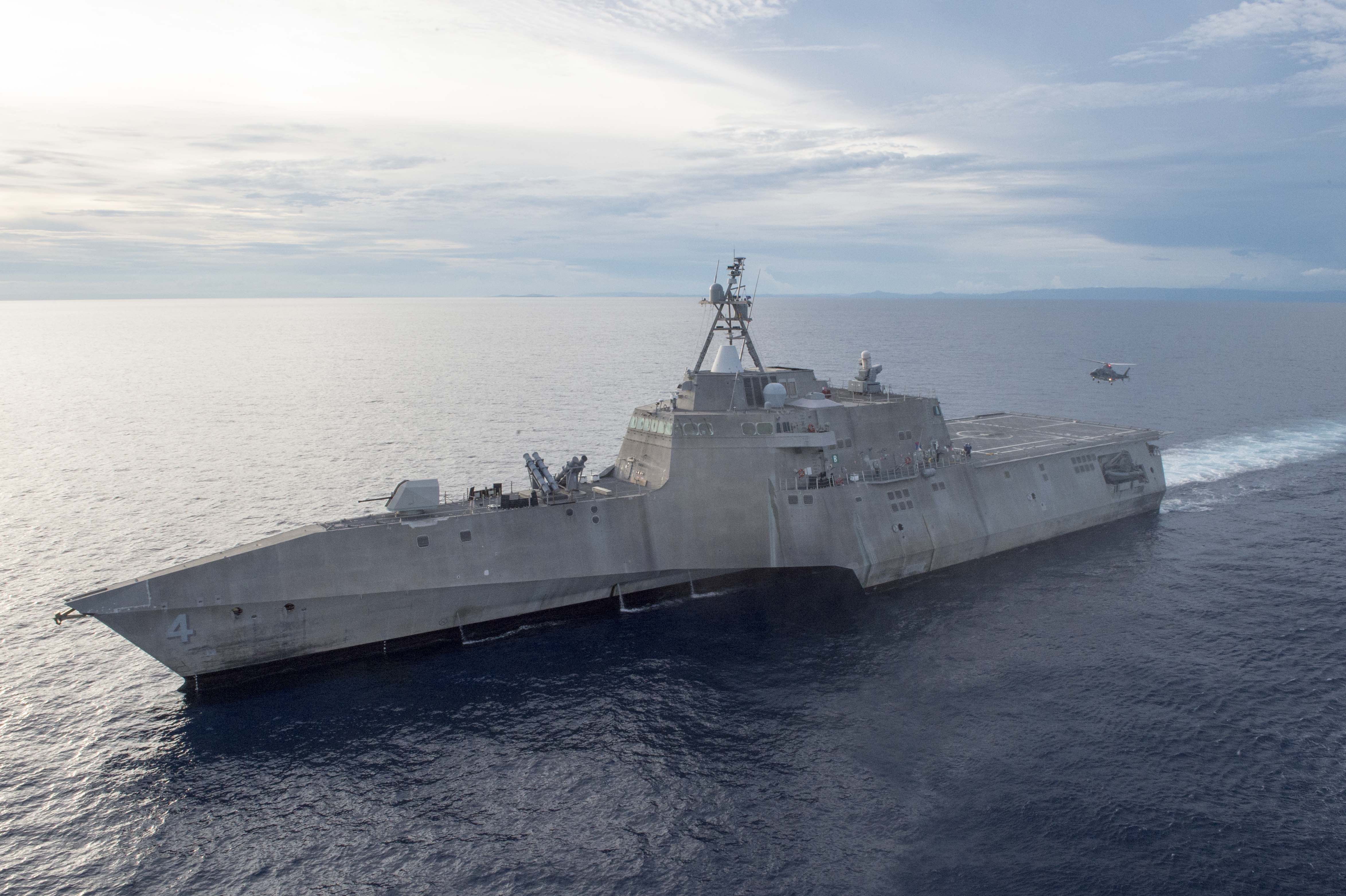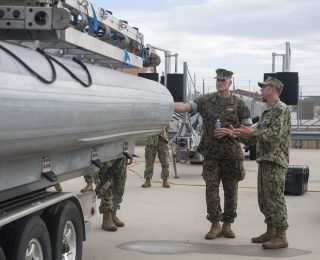
ARLINGTON, Va. – The Navy and Marine Corps are eyeing upgrade plans for their surface combatants and amphibious ships to help guide the development of weapons, sensors, networks and more that will support those ships in a future operating environment.
Director of Surface Warfare Rear Adm. Ron Boxall (OPNAV N96) said at last week’s Surface Navy Association annual symposium that his directorate had drafted a Surface Combatant Capability Evolution Plan (SC CEP) to map out when opportunities for new technology insertion might arise. This plan follows a Tactical Submarine Evolution Plan that was first publicly discussed last fall, and an existing Master Air Plan for the aviation community. An Amphibious Ship Evolution Plan is also in the works, Director of Expeditionary Warfare Marine Corps Maj. Gen. David Coffman (OPNAV N95) added at the event.
“If you start looking across the capability of the surface force, as I told you, I’m not interested in what ship is going to follow that ship; I’m interested in what capability we can field at the big (surface combatant) level, the smaller level, at the unmanned level,” Boxall said during a presentation. He said the Navy already has a 30-year shipbuilding plan, but this SC CEP is meant to look at the underlying systems that create a lethal and survivable ship and get the resource sponsors, the program offices and researchers all on the same page about the timing of incorporating new systems into new ship designs.
Ultimately, he said, this would lead to smarter acquisition if he could develop “a more tangible blueprint that we can use to drive not, how much money do you have so here’s what you get to go buy, but the other way around, say hey this is what we need to do by this time, and if we don’t here’s what the risk is because we modeled it and we know.”
Once all the communities finish their capabilities evolution plans, Boxall said “our next discussion here is going to go to the follow-on, so not just what we’re doing in surface warfare but how do we also work with those other communities to ensure we get what we need from surface warfare and they from us and likewise to have them optimize what they’re doing for us” – in other words, achieve cross-domain interoperability.

Coffman said during his portion of the talk that his amphib capability plan would look to “make these ships viable, lethal and survivable,” with a focus on command, control, communications, computers, cyber and intelligence (C5I). He made clear that his office had to be in lockstep with Boxall’s office and the rest of the Navy to ensure blue-green interoperability as new systems are brought on.
“We’ve got to figure out how to drive the service chiefs and help them – and the secretary (of the Navy) and the Secretary of Defense – to go from birth fiscally, technically and operationally integrated, such that when [today’s] ensigns and j.g.s and midshipmen go out, that stuff already works, and they don’t have to do what I did” with previous integration efforts for new technologies. Citing today’s effort to integrate the Marines’ F-35B Lighting II Joint Strike Fighter with the Navy’s amphibious assault ships and the combat systems onboard, Coffman said, “sure wish that fifth-generation aircraft would drop on down to some 1980s link architecture and tell us what’s going on up there.”
Overall, Coffman said, “we are wholly vested in being part of the surface fleet and the [chief of naval operations’] vision for an integrated fleet. I can tell you with high confidence that’s the commandant’s vision as well.”

As for the specific ideas within the surface combatant and amphib plans, Boxall made clear the SC CEP was more of a mindset than an actual plan. The diagram of the plan outlines when various ships – including multiple block upgrades of the Flight III Arleigh Burke-class destroyer; the Littoral Combat Ship and its follow-on guided-missile frigate; and future large, small and unmanned surface combatants as part of the Future Surface Combatant project – would be operating and therefore when the planning window for its capabilities would be. Noting not just the acquisition date but also the planning timeline would help focus efforts to determine warfighter needs, understand the cost of capabilities, address technological gaps and more ahead of ship design and acquisition.
Boxall’s office told USNI News that the SC CEP is “a planning tool to evaluate when we can, should, or must incorporate new capabilities into the fleet, and what type of asset is the most appropriate platform to incorporate that capability. SC-CEP is deliberate and predictable, which allows N96 to align with other resource sponsors in introducing new capabilities to the fleet in pre-planned capability blocks, in order to optimize the value of the entire force.”
On the amphib side, though a formal plan is still in the works, Coffman and Deputy Commandant of the Marine Corps for Plans, Policies and Operations Lt. Gen. Brian Beaudreault explained some areas the service seeks to modernize.
Agreeing with Coffman’s comments about C5I improvements, Beaudreault said in another speech at the symposium that “key components of that that we’re working on (include) looking at our C2, looking at our fires, looking at our intel, looking at contested comm environment, importance of EW (electronic warfare), resilient and redundant logistics networks, the ability to deliver long-range precision fires given the challenges in the anti-access area-denial environment. That’s going to drive our modernization.”
He cited two recent Marine Corps concepts, Expeditionary Advance Base Operations (EABO) and Littoral Operations in a Contested Environment (LOCE, pronounced (low-key), and said they both call for the ability to distribute the Marine force ashore and rely on a survivable and lethal amphibious ship fleet that can re-aggregate the force and strike an enemy at the time of the Marines’ choosing.

To do that, “we need to enhance our lethality and we need to enhance our survivability, first and foremost. How we retrofit amphibs, what we put on the amphibs, LPD-30 and the future, to make us more lethal is something that we need to discuss,” Beaudreault said.
Additionally, tighter blue-green naval integration must be a priority, he said.
Since EABO calls for Marines to support Navy sea control through fires from the shore, “how does the [Marine Air-Ground Task Force] tactical grid overlay the Navy tactical grid? How do we get cueing for that? How does a HIMARS (High Mobility Artillery Rocket System) battery on a piece of land somewhere get the cueing required to make sure in a comm-contested environment those things can be worked out and still deliver a fires capability? How does that system ashore communicate into [a ship’s combat information center] and have the same kind of picture, fused picture? We’re working on that as well in terms of our command and control system, capabilities that are going aboard the amphibs.”
Beaudreault said the Marines are working separately to increase the range and precision of their weapons, as well as the overall volume of their inventory, but when it comes to the types of operations he expects to see in the future, “the network piece of this cannot be understated.”





